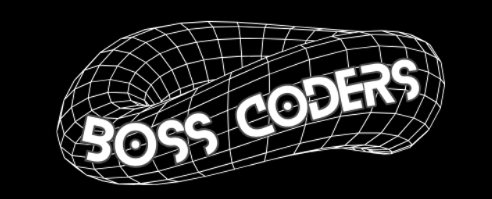Blog
Kristy McNichol and Martie Allen: A Love Story Beyond the Spotlight

In the world of Hollywood and celebrity culture, some relationships capture public interest more than others. One such relationship is that of Kristy McNichol and her partner, Martie Allen. Their love story is not only a testament to enduring commitment but also a narrative that intertwines with themes of privacy, advocacy, and personal growth. This article delves into the lives of Kristy McNichol and Martie Allen, exploring their journey together and the impact their relationship has had on both their personal lives and public perceptions.
Who is Kristy McNichol?
Kristy McNichol is an American actress and singer who rose to fame in the 1970s and 1980s. Known for her talent and charismatic presence, McNichol’s career has spanned several decades, during which she became a beloved figure in entertainment.
1. Early Life and Career
Born on September 11, 1962, in Los Angeles, California, Kristy McNichol began her acting career at a young age. She made her mark with a series of successful roles on television and in film. Her breakout role came with the TV series Family (1976-1980), where she played Barbara Weston, earning acclaim and several awards for her performance.
- Notable Works: In addition to Family, McNichol starred in several popular films such as Little Darlings (1980) and The End (1978). Her talent and versatility made her a sought-after actress during her prime.
2. Personal Challenges and Advocacy
Throughout her career, McNichol faced personal challenges, including struggles with mental health. Her decision to step away from the limelight in the early 1990s was partly due to these struggles. Despite her retreat from public life, McNichol remained an advocate for mental health awareness and used her platform to support relevant causes.
- Mental Health Advocacy: McNichol’s openness about her mental health issues helped raise awareness and reduce stigma surrounding mental health challenges.
Who is Martie Allen?
Martie Allen is known for her private life, particularly her relationship with Kristy McNichol. While not a public figure in the same way as McNichol, Allen’s role in McNichol’s life is significant.
1. Early Life and Career
Martie Allen’s personal details are relatively private, and she has not pursued a career in the public eye. Her background is less documented compared to McNichol’s, but her relationship with the actress has brought her into the public sphere. Allen’s profession and personal achievements remain largely out of the spotlight, which is in line with her preference for privacy.
2. Relationship with Kristy McNichol
Martie Allen and Kristy McNichol began their relationship in the late 1980s. The couple’s relationship is marked by its privacy and longevity. Unlike many high-profile couples, McNichol and Allen have chosen to keep their personal lives out of the media, focusing instead on their life together away from the public eye.
- Commitment to Privacy: Allen’s preference for staying out of the media spotlight contrasts with McNichol’s earlier public career, highlighting their desire for a private life.
The Relationship Between Kristy McNichol and Martie Allen
The relationship between Kristy McNichol and Martie Allen is a notable example of a private yet enduring partnership. Their love story has been a source of inspiration for many, particularly those who value privacy and authenticity in their relationships.
1. A Private Love Story
McNichol and Allen’s decision to maintain their privacy has garnered respect and admiration. The couple’s choice to stay out of the public eye reflects their commitment to each other and their desire to lead a life that is true to their values.
- Privacy and Respect: Their relationship has been a testament to the idea that love and commitment do not always need to be on public display to be genuine and fulfilling.
2. Advocacy and Public Perception
Although McNichol and Allen have kept their personal lives private, their relationship has had an impact on public perceptions of celebrity relationships. McNichol’s advocacy work, combined with the couple’s private nature, has contributed to discussions about the balance between public and private life.
- Impact on Public Discourse: The couple’s choice to maintain privacy has contributed to broader conversations about the importance of respecting individuals’ personal boundaries, especially for public figures.
The Legacy of Kristy McNichol and Martie Allen
The legacy of Kristy McNichol and Martie Allen extends beyond their individual achievements and relationship. Their story is a reflection of several key themes that resonate with many people, including the importance of privacy, the power of advocacy, and the value of authentic relationships.
1. Privacy and Personal Boundaries
Their relationship underscores the significance of personal privacy and the right to maintain boundaries, even for those in the public eye. McNichol and Allen’s choice to live privately has been a powerful statement about the importance of protecting personal space and maintaining a sense of normalcy.
- Respect for Privacy: Their story serves as a reminder of the need to respect individuals’ choices regarding their personal lives, regardless of their public status.
2. Advocacy and Awareness
Kristy McNichol’s advocacy for mental health has been a significant part of her legacy. Her openness about her struggles has helped raise awareness and foster a more supportive environment for those facing similar challenges.
- Raising Awareness: McNichol’s advocacy work has had a lasting impact on mental health awareness, demonstrating the power of using one’s platform for positive change.
3. Authentic Relationships
The authenticity of McNichol and Allen’s relationship highlights the value of genuine connections. Their commitment to each other, despite the pressures of public life, is a testament to the strength and resilience of their bond.
- Enduring Love: Their story exemplifies the idea that love and commitment can thrive in the face of external challenges, inspiring others to value and nurture their own relationships.
Challenges and Misconceptions
Despite their commitment to privacy, McNichol and Allen’s relationship has faced its share of challenges and misconceptions.
1. Media Intrusion
The couple’s desire for privacy has occasionally been challenged by media interest and speculation. The public’s fascination with celebrity relationships can sometimes lead to intrusive behavior, highlighting the difficulties of maintaining privacy in the public eye.
- Navigating Media Attention: McNichol and Allen’s ability to manage media interest while preserving their privacy demonstrates their strength and dedication to their relationship.
2. Public Perceptions
The private nature of their relationship has sometimes led to misconceptions or incomplete understandings of their lives. Public figures often face assumptions or judgments based on limited information, which can affect perceptions of their personal choices.
- Addressing Misconceptions: McNichol and Allen’s choice to focus on their life together, rather than addressing public misconceptions, reflects their commitment to living authentically and staying true to their values.
How to Support and Respect the Couple
Supporting and respecting Kristy McNichol and Martie Allen involves acknowledging their desire for privacy and appreciating the positive aspects of their relationship.
1. Respect Privacy
Respecting their privacy is a fundamental way to support the couple. Avoiding intrusive questions or speculation about their personal lives honors their decision to keep their relationship out of the public eye.
- Supportive Approach: Recognize and honor their choice to maintain privacy, and focus on celebrating their achievements and contributions rather than their personal details.
2. Advocate for Mental Health
Supporting Kristy McNichol’s advocacy work in mental health is another meaningful way to honor her legacy. Engaging with and supporting mental health initiatives can help further the positive impact of her advocacy efforts.
- Engage in Advocacy: Participate in or support mental health awareness campaigns and organizations to contribute to the ongoing efforts to address mental health challenges.
3. Celebrate Their Achievements
Acknowledge and celebrate the achievements of both Kristy McNichol and Martie Allen. Their contributions to their respective fields and their personal journey together are worth recognizing and appreciating.
- Recognize Contributions: Focus on their positive impact and accomplishments, celebrating their successes and the inspiration they provide to others.
Conclusion
The relationship between Kristy McNichol and Martie Allen is a compelling narrative that goes beyond the typical celebrity love story. Their commitment to privacy, coupled with McNichol’s advocacy work and their enduring partnership, reflects themes of authenticity, respect, and personal growth.
As we explore their lives and relationship, it’s important to honor their choices and appreciate the positive contributions they’ve made. Kristy McNichol and Martie Allen’s story serves as a reminder of the power of genuine connections and the importance of maintaining personal boundaries in the public eye.
Blog
Pin Up Azərbaycan Benefit Qazanın
Pin Up Az Rəsmi Giriş Azərbaycanda Onlayn Kazino Pin-up”
Content
- Pin-up Kazino Saytının Bölmələri Və Strukturu
- Rəsmi Pin-up Casino Saytı
- Pin Way Up Casino-da Depozit Qoymaq
- Pin-up-da Depozitlər Və Pul Çıxarılması
- Casino Flag Up-ın Üstünlükləri
- Pinup Casino Xidmət Dəstəyi
- Texniki Dəstək Onlayn Kazinonu Dəstəkləyir
- Cashback Bonusu
- Məlumatlar
- Qeydiyyat Prosedurundan Necə Keçə Bilərsiniz?
- Slot Maşınları
- Eksklüziv Təkliflər
- Dəstək 24/7
- Pin Up Casino-da Istifadəçi Dəstəyi
- Promokodları Əldə Etmək Üçün Yol
- Pin-up Hansı Ödəniş Sistemlərini Dəstəkləyir?
- Pin Up Casino — Qumar Əyləncə Dünyasının Lideri
- Xoş Gəlmisiniz Bonusu
- Pinap Casino-da Canlı Diler Oyunları
- Pin Up-ın Üstünlükləri Nələrdir
- Pin Up Azerbaijan – Qumarbazlar Üçün Limitsiz Imkanlar
- Təhlükəsizlik Və Etibarlılık
- Pin-up Kazinosunda Onlayn Neçə Oyun Var?
- Azərbaycanda Pin-up Bonus Proqramı
- Pin Up-da Hansı Oyunlar Var
- Pul Üçün Pin Up Oynamağa Necə Başlamaq Olar
- Pin Up Az: İdman Mərcləri Və Online Kazino Üçün Ən Yaxşı Seçiminiz!
- Pi̇n Up Saytinda Depozi̇t Yatirmaq Və Pul Çəkmək
- “pinup Casino – Etibarlı Kazino Platforması
- Qəza Oyunları
- Pin-up Kazino Mobil Cihazlarda Oynana Bilərmi?
Pin-Up casino Azərbaycanda 2016-cı ildə fəaliyyətə başladı. Bu brend Carletta NV şirkətinin mülkiyyətindədir və baş ofisi” “Curaçao ünvanındadır, əsas ünvanı isə Perseusweg 27A-dır. İlk başladığında, oyun slotlarının sayı bir neçə yüz idi, lakin bu sayədər müddət içində artıb və indi 4000-dən çoxa çatıb. Pin-Up casino yalnız altı il ərzində böyük bir uğur qazanaraq, 10 milyondan çox istifadəçini qumar sektorunda liderlərdən biri kimi təsdiqləyib. Öz əhəmiyyətli tarixi 2018-ci ildir, çünki o zaman şirkət qumar evinin fəaliyyəti və reward proqramı sahəsində ciddi dəyişikliklərə imza atmışdır.
- Hesabı Monobank Privat24, Skrill, Payeer, AdvCash elektrum cüzdanlarından doldurmağa icazə verilir.
- Oyunlarda yüksək RTP təmin edilir və qaliblər ədalətlə seçilir.
- Qeydiyyatdan keçmiş oyunçular isə sadəcə istifadəçi adlarını və şifrələrini daxil edərək asanlıqla sistemə daxil ola bilərlər.
- İstənilən büdcəyə malik olan ziyarətçilərin oyunlardan həzz alması üçün mərclərin çeşidi mümkün qədər genişdir.
Bu promosyonlar tez-tez yenilənir, beləliklə oyunçular həmişə en yeni təkliflərdən yararlana bilərlər. Pin Up kazinosunda slotlar, masa oyunları, canlı diler oyunları və hətta idman mərcləri kimi müxtəlif oyun növləri va. Burada hər kəs öz zövqünə uyğun bir şey aperitivo bilər, ən populyar oyun provayderlərindən olan NetEnt, Microgaming və Evolution Gaming kimi markaların oyunları ilə. Pin Up kazinosunun veb saytı intuitiv və asanlıqla naviqasiya edilə bilən bir interfeysə malikdir.
Pin-up Kazino Saytının Bölmələri Və Strukturu
Pin Up Online casino az-da hesabınızı artırmaq və uduşları çıxarmaq asandır. Bu, veb sayt və en este momento mobil proqram vasitəsilə edilə bilər. Saytda ödənişlər “Kassir” bölməsi vasitəsilə həyata keçirilir. Pul vəsaitləri demək olar ki, dərhal balansınıza köçürüləcək, çünki emal avtomatik baş verir.
- Böyük bonuslar və pulsuz fırlanmalarla eksklüziv promotional!
- Asiya regionundan, Cənubi və Şimali Amerikadan olan qumarbazlar da sayta daxil ola bilərlər.
- Pin up mobil tətbiqi haqqında
Bu, onun dünyanın müxtəlif ölkələrində ən tanınmış kazinolardan biri olmasına səbəb olmuşdur. Pin Up-daki bonus təklifi qumar sənayesində ən maraqlı təkliflərdən biri hesab edilir. Xoş gəldin bonusunun yanı sıra, bu şirkət düzəlişli olaraq promosyon aksiyaları təşkil edir, turnirlər və lotereyalar düzenləyir pin up.
Rəsmi Pin-up Casino Saytı
oyunçular üçün etibarlı provayderlərdən olan 5000-dən” “çox slot maşını mövcuddur. Kazino ilə yanaşı, siz idmana, u cümlədən müxtəlif növ mərclərlə canlı oyunlara mərc edə bilərsiniz.
- Pin-Up-da canlı diler bölməsini ayrıca qeyd etmək lazımdır.
- Daima yenilənir və təkmilləşir, mobil
- Qeyd edək ki, siz demo versiyasından istifadə edərək pulsuz Pin Up” “slot machine game maşınlarını oynaya bilərsiniz.
- Pincoinlər əldə etmək, hesabınızı doldurmaq və oynamağa başlamaq üçün profilinizi tamamlayın.
Pin Up kazinosunu oyunçular üçün nəyin maraqlı etdiyini öyrənək. Pin Up kazinosu, xüsusilə yeni oyunçular üçün cəlbedici qarşılama bonusları təklif edir. Bu bonuslar, depozitsiz bonuslar və pulsuz fırlanmalar daxil olmaqla, oyunçulara daha çox oyun oynamaq və daha böyük qazanma şansı verir.
Pin Way Up Casino-da Depozit Qoymaq
Asiya regionundan, Cənubi və Şimali Amerikadan olan qumarbazlar da sayta daxil ola bilərlər. Pin-Up Casino bütün dünyada qumar müəssisələri üçün yüksək keyfiyyət barını təyin edən qlobal tendensiyaya çevrildi. Pin Up Casino Azerbaycan-ın əsas xüsusiyyətlərindən birini – unikal dizaynını unutmaq olmaz. Saytın vizual dizaynı bizi 1950-ci illərin ortalarında Amerika qrafikasına istinad edir. Onun əsas elementi qısa paltarlarda və ahora mayolarda parlaq şəkildə boyanmış cəlbedici qızlardır. Bu dizayn təkcə xoş təəssürat yaratmır, həm də kazinoya ziyarətçilərin diqqətini bonuslara, promosyonlara və ya qaydalara yönəltməyə imkan verir.
Rəsmi Pin-Up veb-saytının əsas səhifəsi olduqca cəlbedici görünür. Naviqasiya hətta yeni başlayanlar üçün sadə və aydındır. Əsas diqqət ekranın mərkəzindəki parlaq bannerlərə yönəlib. Bir az aşağıda siz ən yaxşı slot maşınlarının seçimini görə bilərsiniz. Qeydiyyat və giriş düymələri yuxarı sağ küncdə yerləşir. Altbilgidə siz Pin Up kazinosu, lisenziyası, qaydaları haqqında əsas məlumatları tapa bilərsiniz.
Pin-up-da Depozitlər Və Pul Çıxarılması
Platformada mütəmadi olaraq turnirlər keçirilir, burada eksklüzivlərin pərəstişkarları əhəmiyyətli mükafatlar ala bilərlər. İstənilən büdcəyə malik olan ziyarətçilərin oyunlardan həzz alması üçün mərclərin çeşidi mümkün qədər genişdir. Pin Up çox səviyyəli oyunçu həvəsləndirmə sisteminə malikdir. Yeni gələnlər gəlirli xoş gəlmisiniz bonusu ilə oynamağa təşviq edilir. Sayta vaxtaşırı daxil olan istifadəçilər pulsuz fırlanmalara, cashback və qiymətli hədiyyələrlə lotereyalara arxalana bilərlər.
- daxil olaraq yuxarı sağ küncdəki “Giriş” düyməsinə klikləyin.
- Saytın interfeysi bütövlükdə baxdıqda xoş təəssürat yaradır.
- Ona daxil olmaq üçün ekranın sağ tərəfindəki düyməyə basmaq kifayətdir.
- Hər aksiyada yalnız bir dəfə iştirak etmək mümkündür — təkrar mükafatlar almaq mümkün deyil.
Apple Pay və Google Pay mobil sistemləri ilə ödəniş də mümkündür. Hesabı Monobank Privat24, Skrill, Payeer, AdvCash elektron cüzdanlarından doldurmağa icazə verilir. Minimum yükləmə məbləği 5 ₼, maksimum isə 6th, 000 ₼ (bəzi ödəniş sistemlərindən istifadə edərkən daha arizona ola bilər). Nəzərə alın ki, ödəniş sistemindəki hesab sizin adınıza qeydiyyatdan keçməlidir.
Casino Pin Number Up-ın Üstünlükləri
Axı canlı yardım kazino oyunçularına kazino rəsmiləri ilə əlaqə saxlamağa imkan verir. Pin-up Casino Online dəstək Kömək həftənin hər günü 24/7 aktivdir. Casino istifadəçiləri istənilən vaxt müştəri dəstəyi nümayəndələri ilə” “əlaqə saxlaya bilərlər.
- Altbilgidə siz Pin Upwards kazinosu, lisenziyası, qaydaları haqqında əsas məlumatları tapa bilərsiniz.
- buraxılıb.
- Pin-Up Online casino saytında onların kifayət qədər çoxu var.
- Bu
- Sadəcə qonaq kimi
Kazinonun rəsmi veb sayt dizaynı, sizi ən yaxşı qalib gəlmək üçün təşviq edəcək unikal bir atmosfer yaradır. Oyunçular, sevimli slotlarında oynamağı daha da rahatlaşdırmaq üçün bukmeker kontorunun mobil versiyasından istifadə edə bilərlər. Ona giriş etmək üçün mobil telefonunuzda quraşdırılmış brauzeri istifadə edə bilərsiniz.
Pinup Casino Xidmət Dəstəyi
Sayta daxil olmaq üçün rəsmi Pin-up veb ünvanını istifadə etmək kifayətdir. Əgər ölkədə bloklanmışsa, müasir güzgü saytlardan və ya VPN xidmətlərindən istifadə edə bilərsiniz. Pin-up kazinosunun mobil versiyası weil mövcuddur ki, bu da oyunçulara istənilən yerdən oyunlardan zövq almağa imkan verir. Qeydiyyatdan keçmiş oyunçular isə sadəcə istifadəçi adlarını və şifrələrini daxil edərək asanlıqla sistemə daxil onda bilərlər. Pin-up kazinosu, təhlükəsizliyi və məxfiliyi təmin edən qabaqcıl texnologiyalardan” “istifadə edir ki, bu da oyunçuların məlumatlarının qorunmasını təmin edir.
Hesabı üçüncü şəxslərə məxsus elektron pul kisələrindən və ya bank kartlarından doldurmağa cəhd Pin Way up Casino online hesabının bloklanmasına səbəb landa bilər. Pin Upward zamanla ayaqlaşır, hesabınızı kriptovalyutalarla doldurmağa imkan verir. Virtual sikkələr cari məzənnə ilə fiat valyutasına çevriləcək. Məşhur kriptovalyutalar üçün təxmini limitlər cədvəldə göstərilmişdir.
Texniki Dəstək Onlayn Kazinonu Dəstəkləyir
2016-cı ildə fəaliyyətə başlayan onlayn kazino tez bir zamanda yüz minlərlə oyunçunun sevimli tətil yerinə çevrilib. Pin Up AZ ziyarətçilərini 5000 slot kolleksiyası, canlı dilerlərlə 500-dən çox oyun, bir neçə onlarla attraksion və ən yaxşı TV oyunları gözləyir. Yeni oyunçular 12, 000 ₼ qədər xoş gəlmisiniz bonusu və 250 pulsuz fırlanma” “ilə qarşılanır. Daimi ziyarətçilər həftəlik cashback, depozitsiz bonus, Hədiyyə Qutuları və loyallıq proqramında iştirak üçün mükafatlara arxalana bilərlər. Pin-Up təkcə Azərbaycanda deyil, digər ölkələrində də xidmət göstərir.
- Müstəqil laboratoriyalar müntəzəm olaraq kazinonun təsadüfi nömrə generatorunu sınaqdan keçirir və oyun proseslərinin bütövlüyünə zəmanət verir.
- Sayt Azerbaycan və türk dilləri daxil olmaqla
- Qumarbazın məqsədi müəyyən bir hadisə baş verməmişdən əvvəl uduşları toplamaqdır.
- asandır, amma IOS cihazınızda da regionu Özbəkistan olaraq dəyişərək
Mobil cihazlar” “üçün optimallaşdırılmışdır, beləliklə oyunçular hər yerdə və hər zaman rahatlıqla oynaya bilərlər. Saytın sadə dizaynı en yeni başlayanların belə tez bir zamanda uyğunlaşmasına kömək edir. Pin Up kazinosu yüksək təhlükəsizlik standartlarına riayət edir və məlumatların mühafizəsi üçün ən müasir şifrələmə texnologiyalarından istifadə edir. Pin Up kazinosunun tarixi 2016-cı ildə başlayır, bu zaman Carletta Limited şirkəti rəhbərliyi altında kazino ilk dəfə qanuni digital bazarda peyda olur. Pin Up kazinosunun Azərbaycanda fəaliyyətə başlaması da 2016-cı ilə təsadüf edir.
Cashback Bonusu
Pul çıxararkən kazino bildirir ki, sorğunun icrası two ilə 5 iş günü çəkə bilər. Əslində pul adətən hesaba 3-5 sewaktu ərzində daxil olur. Pul çıxarmaq üçün Pin-Up casino komissiyası 0% təşkil edir.
- aktivdir.
- Saytın sadə dizaynı en yeni başlayanların belə semblante bir zamanda uyğunlaşmasına kömək edir.
- Siz” “əmanət qoyduğunuz şəkildə Pin-Up kazino-ya pul çıxara bilərsiniz.
- Pin Up kazinosu, xüsusilə yeni oyunçular üçün cəlbedici qarşılama bonusları təklif edir.
- Saytın özü mobil versiyada ag rahatdır – interfeys və funksionallıq tam dublikasiya olunur.
daha ətraflı oxumaq üçün Mobil səhifəmizə keçin. Hansı format seçilməsindən asılı olmayaraq, telefonla oyun avtomatlarında oynamaq texniki qüsurlar və ya yüklənmənin aşağı sürəti ilə müşayiət olunmur. Bu, HTML5 texnologiyalarının istifadəsi ilə izah edilir. Saytın özü mobil versiyada da rahatdır – interfeys və funksionallıq tam dublikasiya olunur. Maksimal pul bonusu məbləği hər bir aksiyanın şərtlərindən asılıdır.
Məlumatlar
Son nəticə isə belədir ki, Pin up casino və mərc saytı etibarlı və populyar bir saytdır. Əlverişli bonuslarla əla mərc imkanları yaradır.
Bu seçimlə siz ancaq telefona gələn paroldan istifadə edərək hesaba daxil landa bilərsiniz. Ukraynadan olan istifadəçilər üçün 10-dan çox ödəniş sistemi mövcuddur. Visa və Mastercard bank kartları ən populyar əmanət üsulları olaraq qalır.
Qeydiyyat Prosedurundan Necə Keçə Bilərsiniz?
Saytın düzgün çalışması və hər bir bölməni açması üçün cookie faylları vardır. Bu fayllar kömpüterinizdən bütün tarixçəni sildiyinizdə itəcəkdir. Pin-up kazinosuna giriş Azərbaycanda oyunçular üçün olduqca sadə və rahatdır.
- Bununla belə, ödəniş sistemləri öz rüsumlarını tuta bilər, ona görə də köçürməni təsdiq etməzdən əvvəl şərtləri diqqətlə öyrənməlisiniz.
- Viktorina suallarını cavablandırın və hədiyyə olaraq FreeSpins alın!
- Məşhur kriptovalyutalar üçün təxmini limitlər cədvəldə göstərilmişdir.
- Hansı format seçilməsindən asılı olmayaraq, telefonla oyun avtomatlarında oynamaq texniki qüsurlar və ahora yüklənmənin aşağı sürəti ilə müşayiət olunmur.
- Bu ölkələr arasında Ukrayna, Rusiya, Azərbaycan, Estoniya, Polşa, Türkiyə və Böyük Britaniya da yer alır.
Saytın interfeysi bütövlükdə baxdıqda xoş təəssürat yaradır. Bununla belə, yaş məhdudiyyətlərinə diqqət yetirməyə dəyər. Qeydiyyatın sonunda siz Pin-Up kazino qaydaları ilə razılaşmalı və qeydiyyatdan keçməlisiniz. Hesab yaratdıqdan sonra hesabınızı aktivləşdirmək üçün e-poçt məktubu alacaqsınız.
Slot Maşınları
Bu, hər oyunun dəyişkənliyini, RTP və bonus xüsusiyyətlərini qiymətləndirməyə imkan verəcək. Real puya oynamağa keçmək üçün qeydiyyatdan keçməli və depozit qoymalısınız. Canlı dilerlərlə oyunlar uduşların arxasınca xoş şirkət təmin edəcək. Fərqli yayım dilləri ilə 500-dən çox zaman seçiminiz olacaq.
- Bahis həvəskarları üçün idmana mərc etmək imkanı var.
- Qumar platforması Kurakaoda qeydiyyatdan keçmiş Carletta N. Versus.
- Bu saytda siz real bukmeker dilerləri ilə çoxlu canlı kazino oyunları oynaya bilərsiniz.
- PinUp platformasında ürəyiniz istəyən hər janrda oyun tapa bilərsiniz.
bilərsiniz. Android cihazına yüklənmə apk faylı sayəsində daha asandır, amma IOS cihazınızda da regionu Özbəkistan olaraq dəyişərək yüklənməni həyata keçirə bilərsiniz.
Eksklüziv Təkliflər
Viktorina suallarını cavablandırın və hədiyyə olaraq FreeSpins alın! Superkuboklar haqqında yeni kvizada ən yaxşı fribetlər. Dəqiq cavablar verin və mükafatı 6000 FB-ə qədər götürün.
- IOS, Android və Windows platformalarında yükləməyə
- Bu dizayn təkcə xoş təəssürat yaratmır, həm də kazinoya ziyarətçilərin diqqətini bonuslara, promosyonlara və ahora qaydalara yönəltməyə olanak verir.
- Qumarxanada “şübhəli” bir sxem istifadə etməyə cəhd etməməlisiniz, çünki sayt rəhbərliyi bunu saxtakarlıq hesab edəcək və hesabınızı bloklamağa qərar verəcək.
- Sizə lazım olan tək şey telefon, planşet və ya kompüterinizdən Pin-up saytına qoşulmaqdır.
- Pulsuz spinlər istənilən slotda istifadə edilə bilər.
tərtibatçılar tərəfindən bütün hüquqları qorunması şərtilə istifadəyə buraxılıb. Bu səbəbdən, hər bir əməliyyat üçün rahat ola bilərsiniz. Rəsmi saytda Məxfilik siyasəti bölmlməsində bütün məlumatlar verilib.
Dəstək 24/7
Rəsmi saytı tapa bilmirsinizsə, bizim saytdakı düymələrlə giriş edin və ya mobil tətbiqi yükləyin. Pul çıxarmaq üçün yuxarı sağ küncdəki Kassa bölümünə gedin, istədiyiniz məbləği yazın, pulu
- Hətta mərc etməyə də ehtiyac yoxdur – bəzi istifadəçilər sadəcə izləməkdən həzz alırlar.
- Hesab yaratdıqdan sonra hesabınızı aktivləşdirmək üçün e-poçt məktubu alacaqsınız.
- şifrənizi yazıb “Giriş” düyməsini basın.
- Əsas saytla bağlı problemlər və ya saytın bloklanması zamanı, əsas hesabdan” “avtorizasiya imkanı ilə zərgərdən istifadə edə bilərsiniz.
- “PinUp Azərbaycanda ən çox istifadə edilən kazino platformalarından biridir.
Sorğu açıldıqda, çıxarılacaq məbləği və ödəmə metodunu göstərməlisiniz. Bütün istifadəçilər üçün bir demo versiyon mövcuddur. Qeydiyyat prosedurunu tamamlamasanız da, burada oynaya bilərsiniz. Pulsuz oynamaq, real pul oynamadan əvvəl bacarıqlarınızı inkişaf etdirmək üçün böyük bir imkan təqdim edir. Əsas meyar olaraq, yüksək RTP (İstifadəçiyə qaytarılan pul faizi) dərəcəsi olan bir slot maşını seçmək ən vacibdir.
Pin Up Casino-da Istifadəçi Dəstəyi
Siz hətta müvafiq otağa qoşularaq ingilis dili biliklərinizi yoxlaya bilərsiniz. Yayımlar üçün ilkin” “baxışlar adətən minimum təklifi göstərir ki, bu da büdcənizə uyğun oyunu seçməyə imkan verir. Gecə gec Pin Up online casino online daxil olsanız belə, oyuna qoşula bilərsiniz. Pin Upward Casino ziyarətçiləri pulun oynanıldığı məşhur şoulara qoşulmaq imkanı əldə edirlər.
- Həmçinin, daxili valyuta olan PINCOINS ilə daimi loyallıq proqramına sahibdirlər.
- Yayımlar üçün ilkin” “baxışlar adətən minimum təklifi göstərir ki, bu da büdcənizə uyğun oyunu seçməyə olanak verir.
- daha ətraflı oxumaq üçün Mobil səhifəmizə keçin.
- Bu, onun dünyanın müxtəlif ölkələrində ən tanınmış kazinolardan biri olmasına səbəb olmuşdur.
Minimum pul çəkmək üçün balansınızda 22 AZN vəsait olmalıdır. Bonusla gələn pulu çıxarmaq mümkün olmayacaqdır.
Blog
Pin Up Casino Arizona Azərbaycanda Kazino Rəsmi Sayt: Qeydiyyat Və Giriş
Pin Up Casino Azərbaycan
Content
- Bahis:
- Şifrə Necə Bərpa Etmək Olar
- Pin Up Casino-da Necə Qeydiyyatdan Keçmək Olar
- Top Onlayn Kazino Azərbaycan
- Azərbaycan Oyunçuları Üçün Kazino Güzgü-linklər
- Casino Pin Up-ın Üstünlükləri
- Oynamağa Necə” “başlamaq Olar Pinup
- Pinap Casino Oyunları Və Idman Bahisləri
- Xoş Gəlmisiniz Bonusu
- Android Tətbiqi
- İdman Mərcləri Üçün Başlanğıc Bonusu
- Pin Up Fish Hunter 360 Dan Vəsaiti Necə Yatırmaq Və Çıxarmaq Lazımdır?
- Bonuslu Promokodlar
- Pin Up Mobil Proqramını Haradan Yükləyə Bilərəm?
- Mobil Casino Pin-up
- Pin Up Qeydiyyatı
- Pin-up-da Depozitlər Və Pul Çıxarılması
- Pin Way Up Proqramını Android-də Necə Köçürdmək Olar?
- Canlı Dilerlər Ilə Pin-up 360 Oyunları
- Pin Up Onlayn Casino Dəstək Xidməti
- Tez-tez Verilən Suallar
- Proqramlar Və Mobil Versiya Mövcuddur
- Canlı Flag Up Casino
- Slotlar
- Pin Up-da Oynamağa Necə Başlamaq Olar?
- Mobil Sayt Və Pin Up Tətbiqinin Müqayisəsi
- Azərbaycan Hesabının Qeydiyyatı Və Təsdiqi
- Bukmeker Kontorundan Digər Bonuslar Pin-up
- Orijinal Pin-up Casino Güzgüsünü Necə Tapmaq Olar?
Burada siz hesablanmış pinkoinlərin sayını, səhmlər dəstini və cari lotereyaları görə bilərsiniz. Bölmələrin sadələşdirilmiş tərtibatı cib qurğularının sahiblərinə lazım olan məlumatları semblante tapmağa imkan verir. Mobil kazinoda xüsusi effektlər və animasiya elementləri olmadığı üçün səhifələrin slotlarla yüklənməsi bir neçə saniyə çəkir. Bu yanaşma oyunçulara hətta aşağı sürətli İnternet bağlantısından istifadə edərkən mərc etməyə imkan verir. Proqramı cihaz parametrlərində quraşdırmadan əvvəl naməlum mənbələrdən yüklənmiş proqram təminatının quraşdırılmasına icazə verməlisiniz. Əks halda, proqram təminatının yüklənməsi xəta ilə başa çatacaq.
- Yaddan çıxarmayın ki, bonusdan yalnız bir dəfə istifadə etmək haqqınız va.
- Bu saytın çeşidinin müxtəlifliyini nəzərə alsaq, bu, ən çətin addımdır.
- Bonus sistemi Pin Up on line casino onlayn kazinosunun əsas kozır kartlarından biridir və qeyd etmək lazımdır ki, kazino rəhbərliyi bu məsələdə çox iş görüb.
- Mobil kazinoda xüsusi effektlər və animasiya elementləri olmadığı üçün səhifələrin slotlarla yüklənməsi bir neçə saniyə çəkir.
Onun altında uzun illərdir ki, ofşor kazino və bukmeker kontoru fəaliyyət göstərir. Hüquqi Azərbaycan ofisi beynəlxalq həmkarı ilə heç bir şəkildə formal bağlı deyil. Pin-Up on line casino bölməsi yoxdur və idman mərc oyunları yerli qanunvericiliyə tam uyğun olaraq həyata keçirilir. TsUPIS vasitəsilə işləmək müştərilərə uduşların sürətli və etibarlı şəkildə ödənilməsinə zəmanət verir. “William Hill” MMC “Bukmekerlər Assosiasiyası” SRO-nun üzvüdür — üzvlük şəhadətnaməsi № 8. Müştəri ödənişləri TsUPIS ASC QIWI-bank vasitəsilə həyata keçirilir.
Bahis:
Bu, riski azaltmağa və qazanc təmin etməyə kömək edir. CANLI mərc seçimi ilə oyunların həyəcanını daha da artırın və Pin Up-da idman mərclərini daha maraqlı edin! Slots Cekpot Qəza Kart Oyunları
- Slot oyunlarında oyunçular maşının fırlanan çarxlarındakı müəyyən simvolları uyğunlaşdırmağa çalışırlar.
- Pin Up kazinosunu oyunçular üçün nəyin maraqlı etdiyini öyrənək.
- Hər hansı bir sualınız və en este momento probleminiz varsa, dəstək komandamız həmişə 24/7 xidmətinizdədir.
- Hələ öz qabiliyyətinizə əmin deyilsinizsə, demo rejimində çarxları fırladaraq qazanmağı öyrənə bilərsiniz.
mərclərlə canlı oyunlara mərc edə bilərsiniz. Sayt Azerbaycan və türk dilləri daxil” “olmaqla 11 dili dəstəkləyir. Aşağıdakı cədvəldə, Pin-up casino saytının əsas məlumatları müstəqil şəkildə göstərilmişdir Sevimli saytınızda tam oyun oynamaq və pul qazana bilmək pin up bet
Şifrə Necə Bərpa Etmək Olar
Pin-up Casino On the internet dəstək Kömək həftənin hər günü 24/7 aktivdir. Casino istifadəçiləri istənilən vaxt müştəri dəstəyi nümayəndələri ilə əlaqə saxlaya bilərlər. Pin Up Gambling establishment Azərbaycandan olan oyunçular üçün imkanlar təklif edir Pin Up Bukmeker və casino 2016-cı ildən fəaliyyət göstərir və Azərbaycanda
- Oyunlar kazino üslubunda hazırlanmışdır və tez-tez udmaq üçün bir çox variant təklif edir.
- Vəsaiti kartadan çıxarmaq istəyirsinizsə, şəxsi hesabınıza daxil olmalı və “Kassir” bölməsində pul çıxarma sorğusu verməlisiniz.
- Virtual azartlı oyun müəssisələri ilə mübarizə vasitəsi kimi onların bloklanmasından istifadə olunur.
- Rəsmi tətbiqdən əlavə, heç bir yükləmə və quraşdırma tələb etməyən mobil versiya de uma vardır.
Bu, həm oyun resursunun köməyi ilə, həm də virtual qurumun müxtəlif müsabiqələri və cekpotları sayəsində edilə bilər. Böyük məbləğləri, ən azı 96% RTP əmsalı olan, oyun avtomatları qazanmağa imkan verir. Proqressiv cekpotlu slotlara xüsusi diqqət yetirilməlidir.
Pin Upward Casino-da Necə Qeydiyyatdan Keçmək Olar
Burada dünyanın ən populyar idman növlərinə-futbol, basketbol, tennis və daha çoxuna bahis edə bilərsiniz. Yüksək nisbətlər və geniş bahis bazarları sayəsində hər oyuna həyəcan qatacaqsınız. Bundan əlavə, canlı bahis xüsusiyyəti ilə oyunları actual vaxtda izləmək və proqnozlarınızı dəyişdirmək seçiminiz var.
Müasir onlayn kazinolarda Aviator oyunu innovativ xüsusiyyətləri ilə seçilir. Ənənəvi çarxlar və ödəniş xətləri olmadan oyunçulara hər an uduşlarını götürmək şansı verir. Aviator oyunu idarəolunan qələbə şansı təklif etdiyi üçün bu oyun öz strategiyasını tətbiq etməyi sevənlər üçün əla seçimdir. Bu oyunları lobbidəki müvafiq kateqoriyadan və ya yan menyudan seçib asanlıqla oynamaq mümkündür. Hər bir oyun həm pulsuz, həm də genuine pul rejimində əlçatan olaraq oyunçulara geniş seçim imkanı yaradır.
Top Onlayn Kazino Azərbaycan
Bu, onların maksimum təhlükəsizliyini və məxfiliyini təmin edir. Artıq qeyd etdiyimiz kimi, vəsaitin mədaxil edilməsi və çıxarılması istifadəçinin şəxsi kabinetinin “Kassa” bölməsində baş verir. Çox sadədir – uyğun metodu seçirsiniz, məbləği göstərirsiniz və əməliyyatı tamamlayırsınız. İstifadəçilərə mobil proqram quraşdırmaq imkanı verilir. Pin Up proqramı saytın əsas səhifəsində müvafiq linkdə mövcuddur. Yükləməyə başlamaq üçün mobil cihazınızdan daxil olmalısınız və quraşdırdıqdan sonra sistemə daxil olmaq üçün keçin.
- Bukmeker kontoru dünyanın 100-dən çox ölkəsindən oyunçuları qəbul edir.
- Məsələn, bank kartına köçürdükdə, bu müddət rəsmi olaraq 1 gündən 5 günə qədərdir, amma əslində pul daha tez daxil olur karta.
- Pin-Up Casino saytında onların kifayət qədər çoxu var.
- Qəbul etmək üçün şəxsi hesabınıza pul qoymaq lazımdır.
- Bundan sonra hesab qeydiyyatdan keçmiş sayılır və şəxsi hesabınıza keçə bilərsiniz.
İlk başladığında, oyun slotlarının sayı bir neçə yüz idi, lakin bu sayədər müddət içində artıb və indi 4000-dən çoxa” “çatıb. Pin-Up casino yalnız altı il ərzində böyük bir uğur qazanaraq, 10 milyondan çox istifadəçini qumar sektorunda liderlərdən biri kimi təsdiqləyib. Öz əhəmiyyətli tarixi 2018-ci ildir, çünki o zaman şirkət qumar evinin fəaliyyəti və bonus proqramı sahəsində ciddi dəyişikliklərə imza atmışdır. Bu, onun dünyanın müxtəlif ölkələrində ən tanınmış kazinolardan biri olmasına səbəb olmuşdur.
Azərbaycan Oyunçuları Üçün Kazino Güzgü-linklər
Digər bonuslar kimi, promo kodların aktivləşdirilməsi də müəyyən tələblərə bağlıdır. Oyunçular promo kodu vaxtında istifadə etməlidir, əks halda o etibarsız sayılacaq. Aktivləşdirmədən sonra, əgər şərtlər müəyyən edilibsə, bonusu mərc tələblərinə uyğun olaraq geri qazanmalısınız. Bunlar Pin Way up 360-da ən çox istifadə edilən ödəniş metodlarıdır. Mövcud metodların tam siyahısını şəxsi hesabınızdan görə bilərsiniz.
- Əgər nədənsə “Professional” QIWI hesabını qeydiyyatdan keçirə bilmirsinizsə,” “müştərinin bukmeker kontorunu yoxlamaq üçün bu seçimi seçin.
- Pin Up fish hunter 360 kataloqunda ümumilikdə 30-dan çox idman növü təklif olunur.
- saytdakı bəzi oyunların demonstration versiyalarında məşq edə bilərsiniz, amma
- Qalib olmağın başqa bir yolu isə, turnirlərdə iştirak etməkdir.
- Vəsaitlər hesabda görünməyəcək, lakin bunun üçün hesaba depozit daxil edilməlidir.
Onlar əla proqram təminatı və keyfiyyətli dəstək təmin etməlidirlər. Onlayn kazino seçərkən, proqram təminatçılarının tam siyahısı ilə tanış olmalı və onların etibarlı olduğuna əmin olmalısınız. Təqdim olunan bütün provayderlər,” “onlayn kazinolar arasında çox populyardır və özlərini ən yaxşı tərəfdən göstəriblər.
Casino Pin Up-ın Üstünlükləri
həmin sistemlə də pulu çəkməlisiniz. Minimum pul çəkmək üçün balansınızda 22 AZN vəsait olmalıdır. Son nəticə isə belədir ki, Pin upwards casino və mərc saytı
- Hər dəfə sayta daxil olan zaman müştəri avtorizasiya üçün parol olan SMS kodu alır.
- Bukmeker kontoru müştərinin hesabını yoxlayacaq, ərizəyə icazə verəcək və ahora rədd edəcək.
- Funksionallıq baxımından məhsul saytın mobil versiyasını üstələyir.
- Pinup kazino Azerbaycan bukmeker şirkətinin rəsmi saytı klassik dizayna malikdir.
- Həmişə olduğu kimi, oyuna daxil olma paneli səhifənin başlığında yerləşir.
- Pin Up 360 kazinosunda promo kodlar vasitəsilə hesabınızı daha tez doldurmaq mümkündür.
Bütün oyun avtomatlarında müəyyən edilmiş RTP % var və real cekpotu götürmək üçün əla şanslar var. Pin Up onlayn kazinosu fikrini Azərbaycandan olan oyunçularda cəmləşdirir. Tam lokallaşdırılmış interfeys və AZN-də oyun hesabı yaratmaq imkanı. Sevimli oyunlarını oynamağa və ondan pul qazanmağa üstünlük verən oyunçular,” “oyun hesabı yaratmağa keçməlidirlər. PinUp onlayn kazinosu veb həm fərdi kompüterdən, həm də planşet və ya smartfondan lisenziyalı azartlı əyləncələri oynamaq imkanı verir.
Oynamağa Necə” “başlamaq Olar Pinup
Mobil cihazdan Pin Up üçün qeydiyyatdan keçmək heç də fərqli deyil. Prinsip eynidir – Pin-up rəsmi saytına daxil olmaq, anketi doldurmaq, valyutanı seçmək və şifrə fikirləşmək. Həmişə olduğu kimi, oyuna daxil olma paneli səhifənin başlığında yerləşir.
- Mərc və gambling establishment platforması oyunlar təmin etmək üçün ən qabaqcıl və işinin peşəkarı provayderlərlə əməkdaşlıq edir.
- bilmirsinizsə, əməliyyat sisteminizi yeniləyin, web bağlantınızı
- Bukmeker kontor bu cür mürəkkəb mərclərin həqiqətən geniş seçimini təklif edir.
- Pin Up Azerbaijan saytında masa oyunları və slotlar üçün bir neçə aktiv reward mövcuddur.
Hesabı doldurmaq üçün operator müxtəlif variantlar təklif edir. Hətta Rusiya bankları, Portuqaliya Multibanco sistemi mövcuddur. Azərbaycandan olan oyunçulara belə variantlar lazım olmayacaq.
Pinap Casino Oyunları Və Idman Bahisləri
daxil olaraq yuxarı sağ küncdəki “Giriş” düyməsinə klikləyin. Burada qeydiyyat zamanı istifadə etdiyiniz məlumatları (e-poçt və ya nömrə) və şifrənizi yazıb “Giriş” düyməsini basın.
- Bunun sayəsində” “istifadəçi oyunda daha uzun müddət qalır və beləliklə, udmaq şansını artırır.
- Oyunçu neçə qədər intresserad olarsa, ona görə də imtiyazlar artır.
- Hər bir turnirin altında isə bu turnirə hansı casino oyunları daxil olduğu göstərilir.
- Pin Upwards kazinosunda slotlar, masa oyunları, canlı diler oyunları və hətta idman mərcləri kimi müxtəlif oyun növləri var.
Bonusları aktivləşdirmək istəyirsinizsə, istifadə şərtlərini oxumalısınız. Bonus mərc tələbi yerinə yetirilənə qədər geri götürülə bilməz. Peşəkar oyunçular onu aldıqdan sonra ilk bir neçə saat ərzində oynamağı məsləhət görürlər. Təcrübəli oyunçular maksimum sürətlə oynamağı məsləhət görmürlər, orta səviyyəyə üstünlük verməyi məsləhət görürlər. Bunun sayəsində” “istifadəçi oyunda daha uzun müddət qalır və beləliklə, udmaq şansını artırır.
Xoş Gəlmisiniz Bonusu
Nəzərə alın ki, ödəniş sistemindəki hesab sizin adınıza qeydiyyatdan keçməlidir. Hesabı üçüncü şəxslərə məxsus elektron pul kisələrindən və ya bank kartlarından doldurmağa cəhd Pin Up Gambling establishment online hesabının bloklanmasına səbəb ola bilər. Pin Up zamanla ayaqlaşır, hesabınızı kriptovalyutalarla doldurmağa imkan verir. Virtual sikkələr cari məzənnə ilə redbull valyutasına çevriləcək.
Görüşən komandalarının adlarını, matçın başlama tarixini, əsas bazar 1×2 üçün əmsalları, bahis üçün mövcud variantların siyahısını öyrənmək olar. Təklif olunan mərc seçimlərinin sayı olan düyməyə kliklədikdən sonra matçın təfərrüatları açılacaq. İstifadəçi əlavə bazarları, nəticə əmsallarını görəcək. Ekranın sağ tərəfində are living olaraq nəzərdən keçirilən matçların vizualizasiyası yerləşdirilib. Bukmeker görüşün əsas statistikası ilə bağlı məlumatları nümayiş etdirib. Müştərini maraqlandıran nəticəyə klikləməklə, kupon görünəcək.
Android Tətbiqi
Oyunçularımızın müsbət rəyləri pin up-In doğru yolda olduğunu və inamlı addımlarla irəlilədiyini təsdiqləyir. Pin Up az müştərilərinə uyğun limitlər, sürətli çəkilmələr, Mobil Kazinolar və gecə-gündüz müştəri dəstəyi təklif edir. Müştərilərimiz üçün” “əyləncəli, təhlükəsiz və keyfiyyətli bahis təcrübəsi yaratmağa çalışırıq. Pinup Azərbaycan təhlükəsiz və əyləncəli onlayn oyun və mərclər üçün excellent platformadır. Pin upward az ilə ən yaxşı onlayn mərc və kazino təcrübəsini əldə edin!
- Mobil köçürmə xidmətlərindən, həmçinin WebMoney və Yumani xidmətlərindən istifadə edərkən maksimum 1500 AZN təşkil edir.
- Casino istifadəçiləri istənilən vaxt müştəri dəstəyi nümayəndələri ilə əlaqə saxlaya bilərlər.
- Ekranın yuxarı hissəsində şəxsi hesaba daxil olmaq, şirkətin təklifləri arasında getmək üçün düymələr var.
Sürətli Oyunlar Canlı Dilerlər Stolüstü Oyunlar Bonus Oyunlar Poker
İdman Mərcləri Üçün Başlanğıc Bonusu
Qumarbazın məqsədi müəyyən bir hadisə baş verməmişdən əvvəl uduşları toplamaqdır. Bəxti müşayiət edən oyunçular bir neçə dəqiqə ərzində mərcləri dəfə artıra bilərlər. Oyunlar kazino üslubunda hazırlanmışdır və tez-tez udmaq üçün bir çox variant təklif edir. Platformada mütəmadi olaraq turnirlər keçirilir, burada eksklüzivlərin pərəstişkarları əhəmiyyətli mükafatlar ala bilərlər.
Bu sadə addımları izləyərək Flag Up-da mərc etməyə başlaya və asanlıqla qazanan məbləği çıxara bilərsiniz! Giriş və şifrə birləşməsindən istifadə edərək Pin upwards hesabınıza daxil olun. Daxil olduqdan sonra hesabınızın idarəetmə panelindəki depozit seçimini tapın və üzərinə vurun. Pin Up hesabınıza əlavə etmək istədiyiniz məbləği daxil edin, müvafiq sahələri doldurun və “doldurma”düyməsini basın. Burada əməliyyatı başa çatdırmaq üçün kart məlumatları, cryptocurrency və ya elektron cüzdan hesab nömrəsi kimi əlavə məlumat verməlisiniz.
Pin Up Fish Hunter 360 Dan Vəsaiti Necə Yatırmaq Və Çıxarmaq Lazımdır?
Müxtəlif dillərdə təqdim edilən bu oyunları oynamaq çox sadədir! Pin Up giriş edib qeydiyyatı tamamladıqdan sonra hesabınızı artırırsınız və zövqünüzə uyğun oyunu seçərək mərc etməyə başlayırsınız. Pin Up Online casino giriş edərək casinoların ən məşhur oyunlarından biri olan position oyunlarını oynaya bilərsiniz! Slot oyunlarında oyunçular maşının fırlanan çarxlarındakı müəyyən simvolları uyğunlaşdırmağa çalışırlar. Slot oyunları müxtəlif mövzulara və xüsusiyyətlərə malikdir. Slot oyunları hər zövqə və büdcəyə uyğun oyun seçimi təklif edir.
- Aparıcı provayderlər, o cümlədən NetEnt, Endorphina, Enjoy n Go, Spinomenal və bir çox başqaları oyun maşınlarını ən azı 96% xeyir dərəcəsi ilə təmin edirlər.
- Həmçinin, daxili valyuta olan PINCOINS ilə daimi loyallıq proqramına sahibdirlər.
- səbəbdən, hər bir əməliyyat üçün rahat ola bilərsiniz. Rəsmi saytda Məxfilik siyasəti bölmlməsində bütün məlumatlar verilib.
- Yeni gələnlər gəlirli xoş gəlmisiniz bonusu ilə oynamağa təşviq edilir.
- oyunçular üçün etibarlı provayderlərdən olan 5000-dən çox slot maşını
- Oyunlarda yüksək RTP təmin edilir və qaliblər ədalətlə seçilir.
Doldurmaq üçün VISA, MasterCard, m10, Piastrix, Mpay, kriptovalyuta və digər variantlardan istifadə edə bilərsiniz. Hər hansı probleminiz və hoy sualınız varsa, Pin-Up dəstək xidməti ilə əlaqə saxlaya bilərsiniz. Bu, vebsaytda və ya Telegramda onlayn söhbət vasitəsilə edilə bilər. Saytın altbilgisində tez-tez verilən sualların yer aldığı xüsusi bölmə də va. Hər yeni oyunçu ilk depoziti qoyduqda 250 pulsuz fırlanma alır.
Bonuslu Promokodlar
Bu xəbərlərlə tanış olmaq üçün saytın interfeysindəki solda yerləşən xəbərlər bölməsini seçirsiniz. Bu xəbərləri oxumaqla yanaşı keçid etmək düyməsini basaraq həm daha ətraflı məlumat ala bilər, həm də müvafiq bölməyə keçid edə bilərsiniz.”
Bu tətbiq vasitəsilə oyunçular müxtəlif oyun kateqoriyalarında mərc edib uduşlarını asanlıqla çıxara biləcəklər. Proqramın hər bir yenilənməsi ilə oyun təcrübəsi daha stabil və funksional olur. Android istifadəçiləri tətbiqi rəsmi saytdan yeniləyə bilər, iOS istifadəçiləri isə Iphone app Store-dan yeni versiyanı yükləyə bilərlər. Hər bir oyunçu fərdi maraqlarına uyğun olaraq istənilən oyun növünü seçə bilər və asanlıqla ödənişli və ya pulsuz rejim arasında keçid edə bilər. Hər bir oyunçu slot kateqoriyasından rahat şəkildə seçim edə bilər və fərqli filterlər vasitəsilə sevdiyi oyunu asanlıqla tapa bilər.
Pin Up Mobil Proqramını Haradan Yükləyə Bilərəm?
Pin Up Casino artıq daha çox ölkənin sakinlərinin oynaya biləcəyi bir onlayn platforma genişləndirib. Bu ölkələr arasında Ukrayna, Rusiya, Azərbaycan, Estoniya, Polşa, Türkiyə və Böyük Britaniya weil yer alır. Pin Up Casino qumar əyləncə dünyasında liderdir və burada qeydiyyatdan keçərək əylənə və real pul qazana bilərsiniz. Pin Way up mərc şirkəti Azərbaycanın qanuni mərc bazarının gənc oyunçusudur. Lakin “Pin-Up” brendi uzun müddətdir ki, onlayn qumar əyləncələrinin pərəstişkarlarına məlumdur.
- Pin Up müxtəlif ölkələrdən” “oyunçuları qəbul edən müasir və etibarlı onlayn kazinodur.
- Azərbaycanın Pin Up – ag gün ərzində 100 Canlı mərc hadisəsinə mərc etmək mümkündür.
- Pin Way up AZ ziyarətçilərini 5000 slot kolleksiyası, canlı dilerlərlə 500-dən çox oyun, bir neçə onlarla attraksion və ən yaxşı TELEVISION SET oyunları gözləyir.
- bilərsiniz.
Ancaq QIWI qaydalarına görə, bir günə qədər davam edə bilər. Buna görə də, müəyyən bir idman hadisəsinə mərc etməyi planlaşdırırsınızsa, bu proseduru əvvəlcədən başlayın. Sayt Pin-Up ilkin identifikasiya üçün interfeysə malikdir. Əgər nədənsə “Professional” QIWI hesabını qeydiyyatdan keçirə bilmirsinizsə,” “müştərinin bukmeker kontorunu yoxlamaq üçün bu seçimi seçin. İstədiyiniz idman növünü tez tapmaq üçün əlifba sırası və ya xüsusi filtrlərdən istifadə edə bilərsiniz. Bundan əlavə, əksər rus bahisçilərinin marağına səbəb olan böyük turnirlər yan xəttin yuxarı hissəsində yerləşdirilir.
Blog
GV-RML4005: A Comprehensive Overview

In the ever-evolving landscape of technology, the GV-RML4005 stands out as a versatile and powerful solution designed for various applications. Whether in the realm of industrial automation, telecommunications, or data management, the GV-RML4005 has garnered attention for its robust performance and reliability. This article will delve into the features, applications, benefits, and technological aspects of the GV-RML4005, providing a comprehensive understanding of this remarkable device.
What is the GV-RML4005?

The GV-RML4005 is a high-performance device designed for remote management and monitoring in various sectors. It is part of a broader category of remote management solutions that facilitate the control and oversight of systems from a distance. The GV-RML4005 is particularly known for its ability to integrate seamlessly with existing infrastructure, making it a popular choice for businesses looking to enhance their operational efficiency.
Key Features of the GV-RML4005
- Remote Management Capabilities: The GV-RML4005 allows users to manage and monitor systems remotely, providing real-time data and insights. This feature is crucial for businesses that require constant oversight of their operations, especially in industries such as telecommunications and manufacturing.
- User -Friendly Interface: The device is equipped with an intuitive user interface that simplifies navigation and operation. Users can easily access various functions and settings, making it accessible even for those with limited technical expertise.
- Robust Security Features: Security is a top priority for any remote management solution. The GV-RML4005 incorporates advanced security protocols to protect sensitive data and prevent unauthorized access. This includes encryption, user authentication, and secure communication channels.
- Scalability: The GV-RML4005 is designed to grow with your business. Its scalable architecture allows for easy integration with additional devices and systems, making it suitable for both small operations and large enterprises.
- Versatile Connectivity Options: The device supports multiple connectivity options, including Ethernet, Wi-Fi, and cellular networks. This versatility ensures that users can maintain connectivity in various environments and conditions.
- Data Logging and Reporting: The GV-RML4005 features robust data logging capabilities, allowing users to track performance metrics over time. This data can be used for analysis, reporting, and decision-making, providing valuable insights into operational efficiency.
Applications of the GV-RML4005
The versatility of the GV-RML4005 makes it suitable for a wide range of applications across different industries:
1. Industrial Automation
In industrial settings, the GV-RML4005 is used to monitor and control machinery and equipment remotely. This capability allows operators to oversee production processes, identify issues in real-time, and implement corrective actions without being physically present on-site. The result is increased efficiency and reduced downtime.
2. Telecommunications
Telecommunications companies utilize the GV-RML4005 to manage network infrastructure and monitor performance. The device enables remote diagnostics, troubleshooting, and configuration of network components, ensuring optimal performance and minimizing service interruptions.
3. Smart Buildings
The GV-RML4005 plays a crucial role in smart building management systems. It allows for the remote control of lighting, HVAC, security, and other building systems, enhancing energy efficiency and occupant comfort. Facility managers can monitor and adjust systems in real-time, leading to significant cost savings.
4. Environmental Monitoring
In environmental applications, the GV-RML4005 is used to monitor conditions such as temperature, humidity, and air quality. This data is essential for industries like agriculture, where maintaining optimal conditions is critical for crop health and yield.
5. Transportation and Logistics
The GV-RML4005 is employed in transportation and logistics to track vehicles and manage fleets. It provides real-time data on vehicle location, performance, and maintenance needs, enabling companies to optimize routes, reduce fuel consumption, and improve overall efficiency.
Benefits of the GV-RML4005
The GV-RML4005 offers numerous benefits that make it an attractive choice for businesses across various sectors:
1. Enhanced Operational Efficiency
By enabling remote management and monitoring, the GV-RML4005 helps businesses streamline their operations. Real-time data access allows for quicker decision-making and problem resolution, ultimately leading to improved productivity.
2. Cost Savings
The ability to monitor systems remotely reduces the need for on-site personnel, leading to significant labor cost savings. Additionally, the device’s data logging capabilities help identify inefficiencies and areas for improvement, further contributing to cost reduction.
3. Improved Security
With advanced security features, the GV-RML4005 ensures that sensitive data is protected from unauthorized access. This is particularly important in industries that handle confidential information or operate critical infrastructure.
4. Flexibility and Scalability
The GV-RML4005’s scalable architecture allows businesses to adapt the system to their changing needs. As operations grow or evolve, additional devices can be integrated seamlessly, ensuring that the system remains effective and relevant.
5. Increased Reliability
The robust design and advanced technology of the GV-RML4005 contribute to its reliability. Users can depend on the device to perform consistently under various conditions, minimizing the risk of system failures and ensuring uninterrupted operations.
Technological Aspects of the GV-RML4005
Understanding the technological foundation of the GV-RML4005 is essential for appreciating its capabilities. The device is built on a combination of hardware and software components that work together to deliver its features.
1. Hardware Specifications
The GV-RML4005 is equipped with high-performance processors and memory, allowing it to handle multiple tasks simultaneously. Its durable construction ensures that it can withstand the rigors of industrial environments, making it suitable for various applications.
2. Software Integration
The device supports various software platforms, enabling users to integrate it with existing systems easily. This compatibility ensures that businesses can leverage their current technology investments while enhancing their capabilities with the GV-RML4005.
3. Cloud Connectivity
With cloud connectivity, the GV-RML4005 allows for remote access to data and management tools from anywhere in the world. This feature is particularly beneficial for businesses with multiple locations or those that require mobile access to their systems.
4. API Support
The GV-RML4005 offers API support, enabling developers to create custom applications and integrations. This flexibility allows businesses to tailor the device’s functionality to meet their specific needs, enhancing its overall value.
-

 Blog5 months ago
Blog5 months agoExploring Mikki Mase: Net Worth and Career
-

 Blog10 months ago
Blog10 months ago“Exploring World Gym San Diego: Reviews, Insights, and Experiences”
-

 Blog8 months ago
Blog8 months agoIMDb: The Ultimate Guide to Navigating the Internet Movie Database
-

 Blog8 months ago
Blog8 months agoCoinDesk: Your Guide to the Leading Cryptocurrency News Platform
-
Blog10 months ago
Hello world!
-

 Blog6 months ago
Blog6 months agoWe Design Quality Websites with SEO That Works!
-

 Blog5 months ago
Blog5 months agoBest VPS Hosting Canada: Why OneVDS is the Top Choice
-

 Blog5 months ago
Blog5 months agoUnderstanding JD Vance’s Wife: A Look at Her Background and Net Worth
